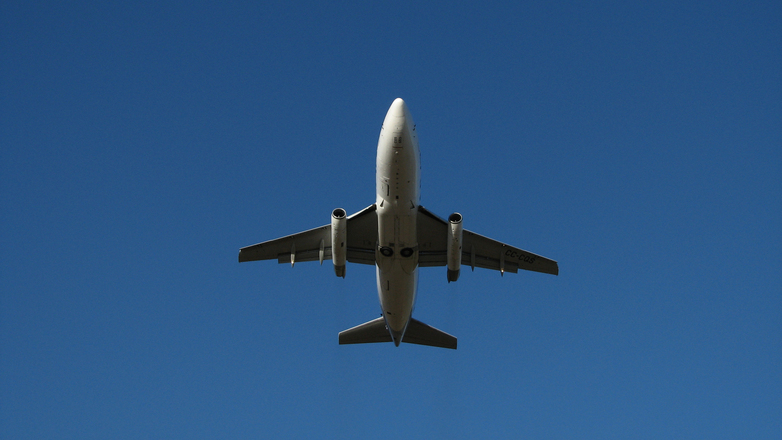The latest six monthly update of the CAPA world airline industry operating margin model increases its forecasts to 2018 relative to the Jan-2017 update. 2016 was probably a cyclical peak, but the current outlook is for a more sustained period comfortably in excess of previous peak margins of around 6% – whereas previous peaks were often followed by rapid downturns.
The most fundamental reason for improved airline industry profitability is better capacity utilisation. Load factor continues to drive upwards to new highs and both daily aircraft utilisation rates and the proportion of the world airline fleet in use have been improving for almost a decade. In addition, lower oil prices have boosted traffic growth and airline industry margins since 2013.
However, the airline industry cannot afford to be complacent. The International Monetary Fund, in the Jul-2017 update of its World Economic Outlook, noted that its GDP growth forecasts were still below pre-crisis averages and that medium term risks are «skewed to the downside». CAPA forecasts margins to ease back in 2017 and 2018 due to increases in oil prices and in the rate of fleet growth, although both factors are moderating relative to the Jan-2017 update.
Changes to the CAPA model from the Jan-2017 update
The key inputs to the CAPA world airline operating margin model are world GDP growth (which drives demand), growth in the global fleet of commercial jet aircraft (which represents supply) and Brent crude oil prices. The outputs are world RPK growth and operating margin.
This revision of the model updates and replace the last forecast published in Jan-2017.
See related report: CAPA airline profit outlook: 2016 was top of cycle, but margins to stay above past cyclical peaks
The main differences between CAPA’s Jul-2017 model and the Jan-2017 forecast are as follows:
Estimate of 2016 margin revised from 8.3% to 8.8%, in line with IATA’s most recent figure published in Jun-2017. IATA gathers bottom up data from airlines and so this should more closely reflect the outturn. Note that 2016 RPK growth has been raised from 6.2% to 7.4%, reflecting IATA’s revision based on a wider sample.
CAPA’s forecast of 2017 margin is increased from 7.4% to 7.9%, due to the lower oil price outlook (lowered from USD57.4 to 54.0) and higher RPK growth (raised from 6.4% to 7.3%).
CAPA’s forecast of 2018 margin is increased from 6.6% to 7.5%, due to the lower oil price outlook (lowered from USD59.8 to 57.4), higher RPK growth (raised from 6.6% to 6.9%) and slower fleet growth (lowered from 4.7% to 4.2%).
IMF GDP growth forecasts, which are the starting point for CAPA’s RPK growth forecasts, are each only 0.1ppt higher than the forecasts used in the Jan-2017 CAPA update. The most recent IMF forecasts, updated in Jul-2017, predict GDP growth of 2.9% in 2017 and 3.0% in 2018, both still below the long term historic trend rate of 3.1%.
However, CAPA’s RPK growth forecasts are increased more significantly (see above). This mainly reflects the high RPK growth reported by IATA for the first five months of 2017, when it reached 7.9% in spite of the modest global GDP forecast. RPK growth looks set to remain above its long term trend rate of 6.2%.
According to the CAPA model, the outlook for fleet growth is a small rise in the rate of increase. It is forecast to go up from 3.9% in 2016 to 4.1% in 2017 and 4.2% in 2018. However, the 2018 forecast is lower than the 4.7% growth in the Jan-2017 update, reflecting a clearer view of the outlook from manufacturers.
The new forecast would still mean that fleet growth in each of the years 2016, 2017 and 2018 is higher than any year since 2001 (when it was 5.6%).
This suggests a slight loosening of the airline industry’s improved capacity discipline, the result of lower oil prices, although fleet growth is still some way short of previous peak growth rates of more than 7%.
The CAPA model uses Brent crude oil price forecasts from the most recent monthly consensus poll published by Reuters (in this case, the one on 29-Jun-2017). This gave an average Brent price forecast of USD54.0 per barrel in 2017 and USD 57.4 in 2018. (As of 07-Aug-2017, Brent crude was USD52.4 per barrel, at the high end of recent prices.)
These figures compare with USD43.6 in 2016, indicating that prices are expected to rise (the average in 1H2017 was USD51.6). Increases in oil prices help to explain the decline in forecast airline margins in 2017 and 2018 from the 2016 peak.
Margins to remain comfortably above previous historic peaks, but falling
The operating margin forecasts in the Jul-2017 update for are higher each of 2016, 2017 and 2018 than in the Jan-2017 update of the CAPA world airline industry operating margin model.
Moreover, the forecast margins for the world’s airline industry are unprecedented in an historical context. Previous cyclical peaks almost never exceeded a margin of 6% and were typically followed by a rapid decline…



